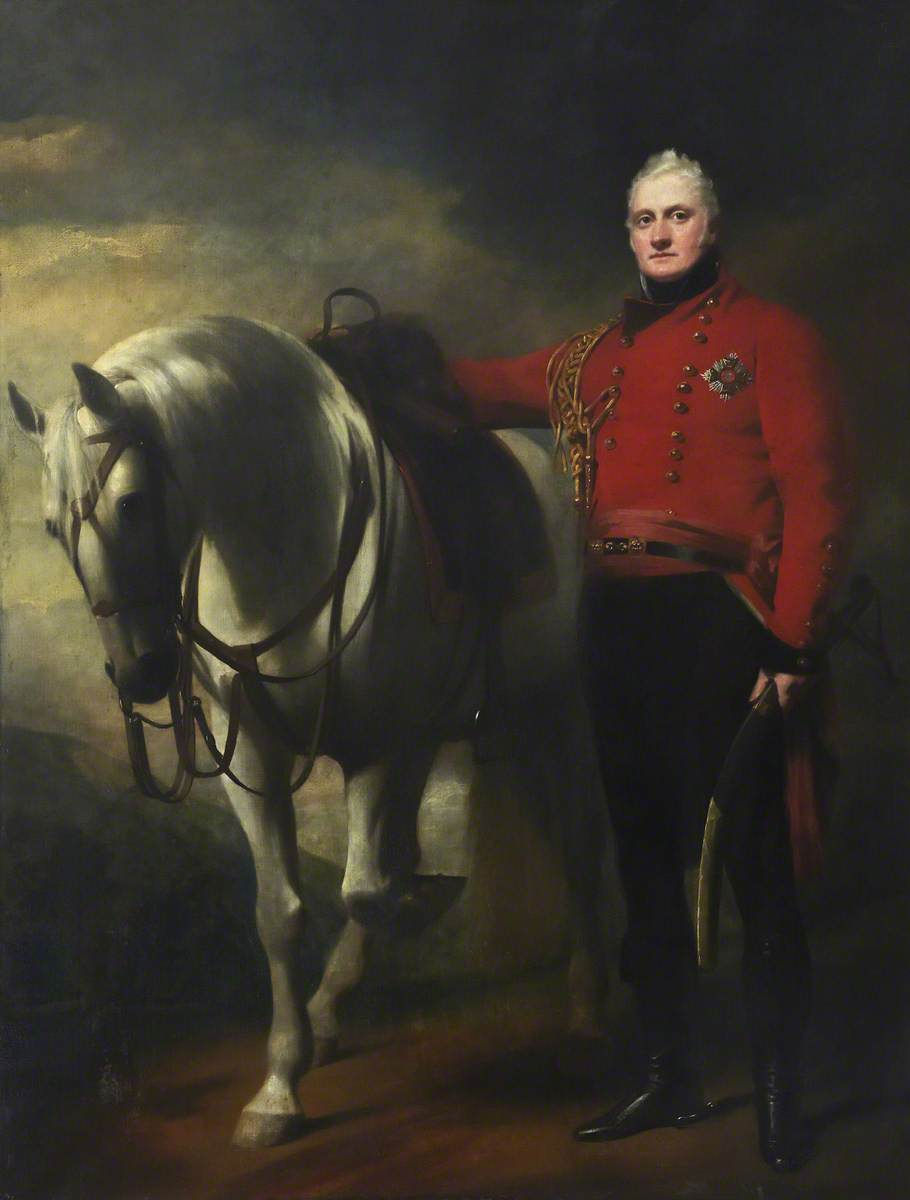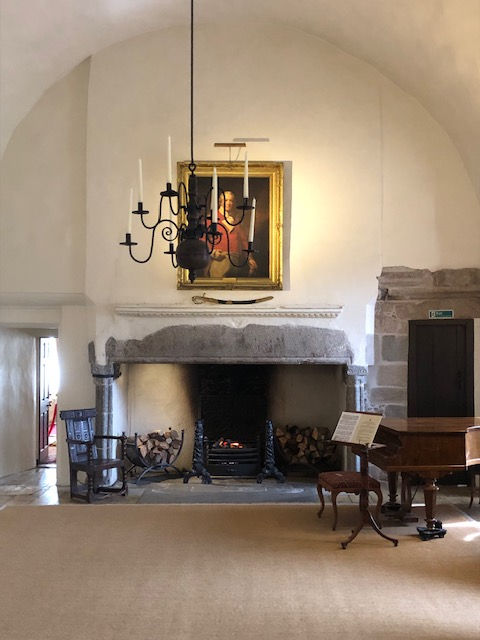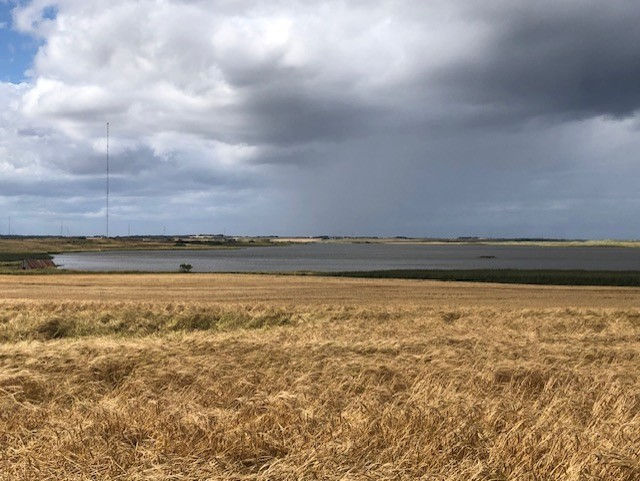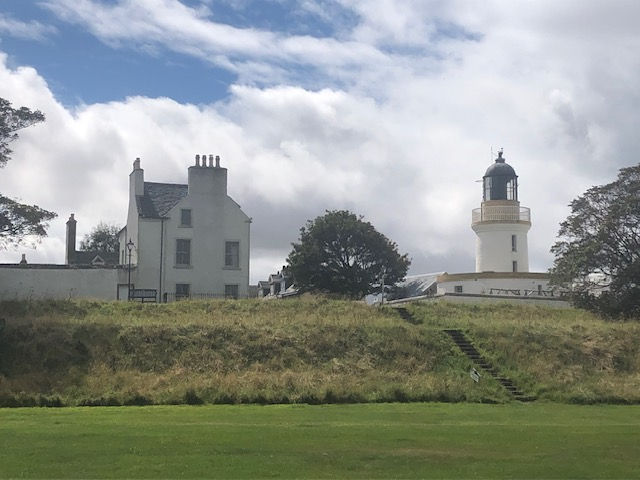- Walking With Brian
- Sep 14
- 7 min read
Updated: Sep 16
The Royal Burgh of Cupar has been the county town of Fife for over 800 years. This title is largely historic in terms of modern administration, as the headquarters of Fife Council has been based in Glenrothes since 1975. Nevertheless, the "Kingdom of Fife" remains one of Scotland's traditional shires and Cupar retains a special charm as an ancient seat of governance. Two venues in the town were on my schedule for the 2025 East Fife Doors Open Day. The County Buildings and the Museum and Heritage Centre.

My mum and I set off on a dreich Sunday morning. I must admit that until today's visit, my familiarity with Cupar stemmed mainly from driving through the place. Exploration of the town centre on foot had been a rare occurrence. A double dose of open-day venues would help redress that balance. We parked just round the corner from the B-listed County Buildings. Mum had done several Sunday road trips to Cupar with her own father many decades ago. As a cub reporter, my dad had been sent to cover a council meeting here on one of his first journalistic assignments. Before centralisation of the DVLA at Swansea in 1974, car and driver documents were processed by individual county councils. Cupar fulfilled that function for Fife. Built in neoclassical style on St Catherine Street, the County Buildings were completed in 1817 and a sympathetic eastward extension was added in 1925. Further office space was created to the rear, three decades later. Initially used mainly for judicial purposes and dealing with burgh business, the property became the base for Fife County Council, formed in 1890. It was a major shake-up of local administration in Scotland. Each historic shire was now governed by an elected public body with considerable unified powers. There were exceptions; 26 large burghs across the land continued to run their own political affairs. Dunfermline and Kirkcaldy were the Fife examples. This patchwork arrangement was largely swept away in 1930, when only the four largest cities retained outside of county control. Two rooms were open to visitors today: County Hall and the former principal courtroom. They are used today for functions and planning committee meetings. Several oil paintings hand from the walls in the old chambers and there is a striking balustraded parapet. The artwork below was created by Sir Henry Raeburn - one of Scotland's foremost portrait painters of the Georgian period. General John Hope - 4th Earl of Hopetoun (West Lothian) - is shown in a military pose. A tall monument dedicated to Hope's exploits stands atop Mount Hill, overlooking Cupar and visible from miles around. We proceeded into the historic courtroom, which held its last case in 2014. The original interior architecture remains intact, but modern technology has been installed throughout. Sheriff trials took place here, with occasional High Court sittings. The Cupar closure was part of a rationalisation scheme across the country, which saw several towns lose their judicial clout.

Scottish local government was completely rearranged in 1975. The County Councils were dissolved and services instead provided by a top tier of nine regional bodies, with a layer of district authorities sitting below. The old shires have never been formally abolished, merely not used for political purposes. Fife actually became an administrative region in its own right, presiding over three subordinate areas, viz Dunfermline, Kirkcaldy and Northeast. Cupar County Buildings became the headquarters for the latter organisation, while also hosting Fife Regional Council on a short-term basis in preparation for the move to Glenrothes. The offices of the Development Corporation for the new town were rebranded as Fife House, which is still in use today. Northeast Fife Council was wound up in 1996, as Scotland adopted a unitary local authority set-up. Since then, the County Buildings have functioned as a customer service point for local residents, dealing with issues such as housing applications and registration of births, marriages and deaths. The scaled-down nature of these responsibilities means only a small part of the premises is actively occupied, with a staff of just 30, compared to 500 in the heyday of Fife County Council. A recent newspaper article questioned the validity of such an arrangement, particularly in a largely digital world. Perhaps a suitable solution would be a hybrid model of local government and artisan traders. The grand nature of the building is an attraction in its own right. We headed round the corner for lunch at Fisher & Donaldson's - a Cupar bakery that has been in existence since 1919. Brothers in law William Fisher and David Donaldson used their demob pay-off to get the business off the ground in the town centre. Now managed by the fifth generation, the firm has seven outlets in the Fife/Dundee area. The shop on Ceres Road has ample seating and we spent a leisurely hour here, before toddling back to the railway station to visit the museum and heritage centre. Cupar is a stop on the East Coast Main Line and running a station of this nature is less intensive in terms of labour than was the case in the days of steam. The museum is run by volunteers and located within a former staff house on the station footprint. Network Rail offered the building at a very reasonable rent and opening hours are 1400 to 1630 three times per week. The current special exhibition commemorates the 250th anniversary of Cupar Curling Club. It is thought to be the 10th oldest organisation of its type in Scotland, making the sport an ancient one, along with golf. Cupar play their matches at indoor ice rinks in both Perth and Kinross. Historically the game was played outdoors in winter and a map showed many curling ponds dotted around the north of Fife. The coming of the rail network paved the way for a massive gathering known as a Grand Match (or Bonspiel) to be staged on a national scale. Major lochs were used. Seven inches of ice must form to ensure the safety of participants. Due to a shift towards milder climates, the Bonspiel has taken place just three times since WW2. Loch Leven hosted the event in 1959 (my dad was a spectator) and the Lake of Menteith was the chosen venue in 1963 and 1979. The deep freeze of 2010 generated the required conditions and the Grand Match was all set to return to Menteith, only for the authorities to cancel the extravaganza as they felt the safety of the estimated 20,000 participants could not be guaranteed. The problem of how to handle a huge volume of traffic on minor roads was also a stumbling block. Something that wasn't a problem when people arrived by train.

The main museum gallery focussed on the history of the Royal Burgh. This status allowed Cupar to trade on an international basis and hold regular domestic fairs. Cupar thrived as a market town in the medieval period and the core streets still extant today came into being. The burgh councillors met in the tolbooth, which also served as a courthouse and jail. This arrangement continued until the emergence of the County Buildings, which also accommodated the head offices of Fife Police until 1949, when Kirkcaldy became the new centre of operations. The Fife & Kinross Asylum opened in 1866, the site being selected because of Cupar's population base and proximity to a main railway line. The establishment was eventually absorbed into the NHS and the name changed to Stratheden Hospital, which treats patients to this day. The general Adamson Hospital opened in 1904 and remains open as a community health facility. Cupar is situated in prime farming territory and Elmwood Agricultural College was launched in 1953, when Fife County Council purchased Elmwood House. The project incorporated the former Stratheden Hospital farm. A golf course was added in 1995 and courses in greenkeeping are now offered. The county town was badly affected by two horrendous railway disasters in the 19th and 20th centuries. The original Tay Bridge collapsed in 1879 while a train was crossing and some of the passengers had boarded at Cupar. There were no survivors. In 1937, a Dundee to Glasgow service stopped at Cupar and later suffered a serious collision in snowy conditions at Castlecary in Dunbartonshire. 35 people lost their lives and many more were injured. The compact museum does a great job of relating the stories of Cupar and its people. The town has gone through many changes since losing its key administration role but remains a bustling country market town. The current population is around 9000. A successful start to my Doors Open schedule for 2025, and good to finally have a proper look at some of Cupar's rich heritage. There was a little more to come though. On the way home, we pulled into Ladybank - a settlement that grew around a busy railway junction. Trains bound for Edinburgh, Dundee and Perth stop here. Our point of interest was a tiny Episcopal church within an end-terraced cottage on the road leading to the village centre. The last remaining example in Scotland of its type, St Mary's staged its inaugural service in 1900.

The micro-church meets twice per month and is partnered with St James the Great in Cupar - a much larger place of worship. The Scottish Episcopal denomination is part of the worldwide Anglican Communion and is the third biggest Christian organisation in Scotland, although considerably smaller than the Church of Scotland and Catholic Church. As you would expect, stepping inside St Mary's is just like entering someone's front room. A long wooden pew is permanently attached to the rear wall and two rows of chairs were set out. A church member welcomed me and explained the regular turnout is around 10 people, but more than double that amount attend around Christmas time. Through the kitchen window, I was able to view the spacious garden behind the cottage - used for coffee mornings and other social functions. The building dates from 1810 and formerly housed factory workers. A quirky little place.











